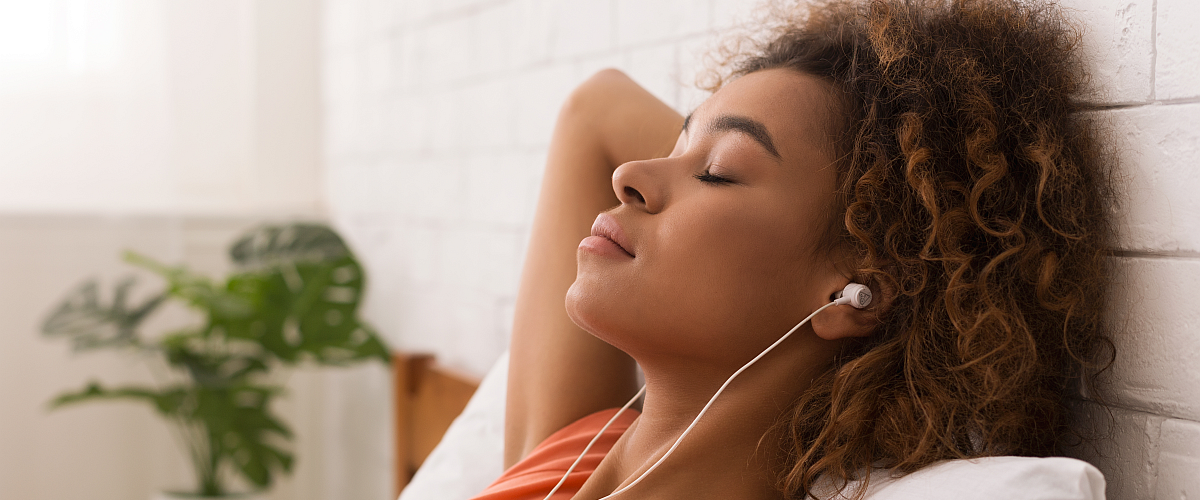The pace of modern life means we’re busier than ever. Every day can seem like an endless wave of to-do lists, responsibilities, and notifications competing for our time and attention. And it can be, well, stressful!
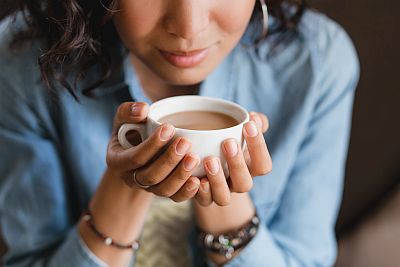 However, too much stress can spell trouble for your overall wellbeing, personal relationships, and ultimately your success at school, at work, or at home. According to the American Institute of Stress, the majority of Americans regularly experience stress that affects their physical health (77%) and/or mental health (73%). And interestingly, research by the American Psychological Association shows that teens and young adults (a.k.a. Gen Z) report the highest levels of stress these days.
However, too much stress can spell trouble for your overall wellbeing, personal relationships, and ultimately your success at school, at work, or at home. According to the American Institute of Stress, the majority of Americans regularly experience stress that affects their physical health (77%) and/or mental health (73%). And interestingly, research by the American Psychological Association shows that teens and young adults (a.k.a. Gen Z) report the highest levels of stress these days.
The good news is that a little self-care can go a long way toward easing stress and supporting your mental and emotional wellbeing. Taking a 15-minute break to relax, rejuvenate, and reset is a great place to start.
That’s the idea behind #TAKE15. The goal? To encourage all of us to take 15 minutes away from our everyday tasks and responsibilities to unwind and recover from stress—and prioritize our mental and emotional wellbeing.
You can (and should!) practice TAKE15 every day as part of a healthy lifestyle. Read on to discover the many health benefits and 15 ways to TAKE15.
Why TAKE15?
Stress is inevitable; it’s your body’s normal reaction to the many demands in your life. The key, then, is learning to manage it. Research has shown that taking short breaks from work can reduce or prevent stress, help improve performance, and reduce the need for a long recovery at the end of the day. You may not feel like you have time to take a break, but those 15 minutes are well spent! Breaks allow your body and mind time to recharge—so you are ready to tackle whatever’s next.
Taking a break to rest is associated with so many health benefits. It can improve memory, giving our brains time to “replay” and process all we have learned and experienced. Research also shows that resting serves as an energy boost and primes our mind to be more creative and productive—and who couldn’t use more of that?
But that’ not all! Spending time in the present moment can help you lower stress, improve blood pressure, sleep better, and even lower your risk of heart disease.
All the more reason to TAKE15 before everyday stress and high-pressure situations become too much. Think of it as hitting the “reset” button—a healthy habit right up there with eating well, exercising regularly, and getting a good night’s sleep.
15 Ways to TAKE15
There are countless ways to TAKE15! The best way to TAKE15 depends on your environment, your schedule, and what you personally enjoy. Taking an exercise or activity break is a great starting point. Engaging in mindful eating can turn a meal or snack time into a much-needed chance to unwind. Even hitting the brakes to relax in small ways can make a big difference!
Ready to leave your screens and work behind for a few? Here are 15 ideas to get you started.
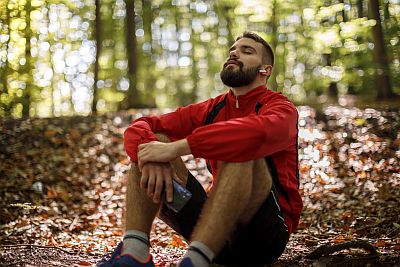
ACTIVITY & EXERCISE
- Take nature walks. We spend so much time indoors, sometimes we have to make an effort to head outdoors. Hanging out in nature has been shown to lower stress and improve memory, says the American Heart Association. The setting for your stroll could be your neighborhood, your school or work campus, or a local park.
- Stretch it out. Stress tends to land in our shoulders and back. A good neck or lower back stretch can help ease tension while being an effective stress reliever. And exercise increases endorphins, making it a natural mood-booster. Follow a short yoga video or make up your own stretching routine.
- Find a break buddy. Connecting with other people is essential for our wellbeing. Social breaks have been proven to be incredibly beneficial in helping people build and nurture personal relationships. What’s more, taking the opportunity to chat, smile, and laugh has been linked to feelings of positivity when returning to your work. If everyone around you seems too busy, remember that furry friends are always eager to share your break time!
- Get colorful. Yes, coloring books are a thing for people of all ages, and for good reason. According to the Cleveland Clinic, the act of coloring helps by relaxing the brain and refocusing your attention away from yourself—and whatever might be stressing you out.
- Laugh out loud. Laughter is (one of) the best medicines, increasing those feel-good endorphins and melting away stress. Turn to your favorite funny book, podcast, or pet video as a welcome distraction.
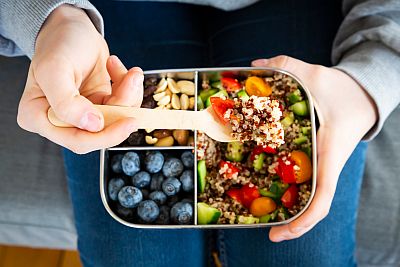 MINDFUL EATING & MINDFULNESS
MINDFUL EATING & MINDFULNESS
- Make every bite a meditation. Eating more mindfully is about taking a moment to take it all in, and it may be a simple and effective way to adopt healthier eating habits too. Check in with your hunger cues, use your senses, slow down, enjoy your food, and stop when you’re full.
- Take a coffee break. You can sip solo or with a friend—whatever you’re in the mood for. And if tea is more your thing, that works, too! Just be careful not to overdo it on the caffeine, which could make you feel more anxious.
- Have a healthy snack. If you’re hungry between meals, use your 15 minutes to fuel up. Low-fat yogurt with berries or whole-grain crackers with peanut butter are just two nutritious examples.
- Refresh your space. There’s a connection between your physical space and your mental space, the Mayo Clinic reminds us. Clutter can feel like “unfinished business” and add unnecessary stress to your life, whether or not you even realize it. That’s why cleaning and organizing are strongly associated with decreasing stress and anxiety. However you choose to tidy up—whether it’s wiping down the counter, making your bed, or vacuuming—the process alone can improve your attention span and focus.
- Meditate. Practicing mindfulness and meditation may help you manage stress and high blood pressure, sleep better, feel more balanced and connected, and even lower your risk of heart disease. Meditation actually is a form of prevention, as it can reduce the onset of stress.

REST & RELAXATION
- Take deep breaths. Breathing is an important part of stress management. It slows down your heart rate, decreasing your blood pressure and giving you a chance to refocus. Close your eyes and concentrate on slow, deep inhales and exhales. If your mind wanders, bring it back to center.
- Cue the music. Crank up your favorite channel or playlist. It’s a great way to spend 15 minutes (or more!) According to Johns Hopkins Medicine, listening to tunes can reduce anxiety, lower blood pressure, improve mood, and more. From pop to jazz to classical, choose whatever genre appeals to you.
- Reach for your gratitude journal. Reflect on at least three things you’re grateful for today, big (good health) and small (nice weather). Practicing gratitude can shape your outlook on life, which may explain its lasting effect on health and wellness.
- Ditch the screens. So much of life is lived online, that devices themselves can contribute to your stress and distractions. So turn off that monitor and set your phone face down. Better yet, turn it on “do not disturb” mode. If done toward end of the day, this trick could help you drift off to sleep.
- Take a power nap. A good nap can get you out of that afternoon slump, recharge your energy, and leave you more alert and in a better mood. Mid-afternoon is best (around 3 p.m.), so find a cool and quiet place for some shut-eye. Just keep it short, so you don’t wake up in a deep sleep, which could leave you feeling groggier than before.
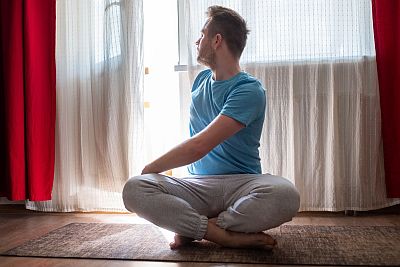 Ready to TAKE15?
Ready to TAKE15?
Try to TAKE15 at least once a day, but preferably throughout the day, either at scheduled times or whenever you feel the pressure building up.
Keep in mind, TAKE15 is a way to support your mental and emotional wellbeing. It shouldn’t replace other healthy lifestyle habits, nor is it a substitute for mental health treatment. If you’re experiencing symptoms of anxiety, depression, or burnout, reach out to a mental health professional.
Tending to your mental and emotional wellbeing is just one more way to fuel your potential in all aspects of your crazy-busy life. How will you take your 15-minute break today? Share with us on Instagram using #TAKEYOUR15!
Note: Since everyone’s health history and nutritional needs are so different, please make sure that you talk with your doctor and a registered dietitian to get advice about the diet and exercise plan that‘s right for you.

